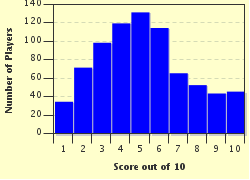Quiz Answer Key and Fun Facts
1. The sword was a hugely popular weapon in RPGs, and even outside the RPG genre - it marked the archetypal hero, so was a fine choice for small-scale killing. However, not all heroes have followed this trend; which of these game protagonists, from a technologically advanced world, did NOT use a sword in their associated games?
2. Which of these "World of Warcraft" classes would you have wanted to choose if you liked stealth, intrigue and backstabbing?
3. In which of these games, released for Xbox in 2002, did Sam Fisher act as an agent of a black-ops organisation, often using finesse over brute force to achieve his goals?
4. Alhazad, a creature who hid his true form beneath his white robes, was a scientist who practiced genetic mutation - most notably transforming humans into monsters, thus ending life as they knew it. In which PSX gun-based RPG released in 1996 did Alhazad appear?
5. Keeping on the theme of mental subversion, the main villain in the popular SNES game "Secret of Mana" was both adept with mind control techniques and in combat. He wanted to find a new life vessel for his decaying body, but, failed in the end. Using your death instinct, can you tell me his name?
6. Which of these PSX RPGs developed by Capcom and known for its Japanese themes featured the deadly Carronade, which irradiated land and garnered the bulk of its power from negative, painful feelings elicited from tortured subjects?
7. Which villain, from the critically acclaimed "Final Fantasy VII", aimed to severely injure the planet with a meteor so as to dominate it with his consciousness; working his influence from afar for much of the game in a dormant state?
8. Lavos, a strange creature, who, other than for the Queen of Zeal, has no relationship with humans, destroys the world of one particular game in the future of the main characters' timeline, simply through its destructive energies. In which SNES game released in 1995 was Lavos first found?
9. Which of these villains from the 'Final Fantasy' series, defeated by Squall Leonhart and friends, spent most of the game trying to possess sorceresses in order to compress time and ultimately become a god?
10. Sometimes, the biggest barrier to mass murder is, well, the person themselves. Have a drink and reflect on this whilst answering this question: In which of these places did Link ("Ocarina of Time") have to defeat an image of himself in order to progress in the dungeon?
Source: Author
malik24
This quiz was reviewed by FunTrivia editor
kyleisalive before going online.
Any errors found in FunTrivia content are routinely corrected through our feedback system.

